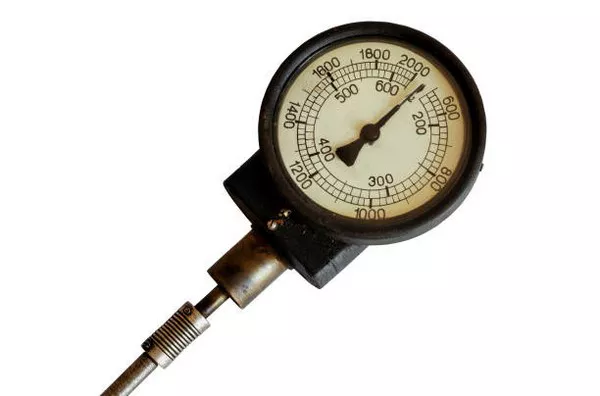Barometers are critical instruments in meteorology, providing essential data on atmospheric pressure which is crucial for weather forecasting. The precise placement of a barometer within a weather station is vital for accurate measurements and effective weather prediction. This article delves into the optimal placement of barometers in weather stations, discussing the factors influencing their placement and the impact of such placement on the accuracy of meteorological data.
Understanding Barometers
Before delving into placement specifics, it is important to understand what a barometer is and how it functions. A barometer measures atmospheric pressure, which is the force exerted by the weight of air above a given point. Atmospheric pressure varies with altitude and weather conditions, making it a key indicator in weather forecasting.
There are different types of barometers, including mercury barometers and aneroid barometers. Mercury barometers use a column of mercury to measure pressure, while aneroid barometers rely on a sealed metal chamber that expands or contracts with pressure changes. Regardless of the type, the principles of placement remain consistent.
Factors Influencing Barometer Placement
1. Avoiding Temperature Extremes
Barometers should be placed in locations where temperature remains relatively stable. Extreme temperatures can affect the accuracy of the barometer, as they can cause thermal expansion or contraction of the instrument itself or the air inside the barometer. Therefore, placing a barometer in a climate-controlled environment within the weather station is preferable. This ensures that readings are not skewed by temperature fluctuations.
2. Minimizing Direct Sunlight
Direct exposure to sunlight can cause local heating of the barometer, leading to inaccuracies in pressure readings. Sunlight can cause the air temperature around the barometer to rise, which in turn affects the atmospheric pressure measurement. To avoid this issue, barometers should be placed in a shaded area or within a shelter that prevents direct sunlight from affecting the instrument.
3. Elevation Considerations
Elevation plays a significant role in atmospheric pressure readings. Barometers should be placed at a consistent elevation relative to other meteorological instruments in the weather station. If the barometer is placed at a different elevation than other instruments, it can lead to discrepancies in data interpretation. Ideally, the barometer should be positioned at the same height as the other instruments to ensure consistency in measurements.
4. Avoiding Vibrations and Mechanical Disturbances
Vibrations and mechanical disturbances can affect the accuracy of barometer readings. Weather stations are often located in areas with minimal human activity to reduce such disturbances. Placing the barometer on a stable surface away from sources of vibration, such as machinery or heavy traffic areas, is essential for obtaining precise data.
5. Protection from Wind
While atmospheric pressure is not directly affected by wind, strong winds can cause physical disturbances to the barometer, leading to inaccuracies. Therefore, the barometer should be placed in a location that is protected from strong winds, such as within a shelter or an enclosed space that minimizes wind exposure.
6. Accessibility for Calibration and Maintenance
Regular calibration and maintenance of the barometer are crucial for ensuring accurate readings. The placement of the barometer should allow easy access for these tasks without disrupting the instrument’s operation. An accessible location within the weather station facilitates timely adjustments and ensures the barometer remains in optimal working condition.
Ideal Placement in a Weather Station
Given these considerations, the ideal placement of a barometer in a weather station involves a combination of strategic positioning and environmental controls:
Inside a Shelter or Enclosure
A common practice is to place the barometer inside a shelter or enclosure that protects it from direct sunlight, wind, and extreme temperatures. This shelter, often referred to as a Stevenson Screen or meteorological screen, is designed to create a controlled environment that maintains stable temperature and humidity levels. The shelter should be ventilated to allow for accurate atmospheric pressure readings.
At a Consistent Elevation
The barometer should be positioned at the same elevation as other meteorological instruments to ensure consistency in data collection. In many weather stations, this means placing the barometer on a standardized platform or mounting it at a fixed height.
On a Stable Surface
The barometer should be mounted on a stable, level surface that is free from vibrations and mechanical disturbances. This stability is crucial for maintaining accurate readings and ensuring the longevity of the instrument.
In a Controlled Environment
Where possible,the barometer should be placed in a climate-controlled environment to minimize the impact of temperature fluctuations. This can involve using temperature regulation systems within the shelter or ensuring the location is naturally sheltered from temperature extremes.
See Also What Causes Barometer To Rise?
Conclusion
The placement of a barometer in a weather station is a critical factor in ensuring accurate atmospheric pressure measurements. By considering factors such as temperature stability, protection from direct sunlight and wind, elevation consistency, and accessibility for maintenance, meteorologists can enhance the reliability of their weather data. Optimal placement within a controlled environment, such as a well-ventilated shelter or enclosure, further ensures that the barometer provides precise and consistent readings. In summary, thoughtful placement of barometers is integral to effective weather forecasting and the overall accuracy of meteorological observations.

